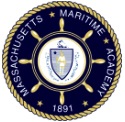MT-2141
Ship Construction
Course Description
A basic knowledge of ship construction and design, the principal structural members of a ship, and the proper nomenclature for the various components are taught in this course. Construction materials and fabrication techniques will be studied. Students will be taught to use ship’s plans and the deadweight scale to extract pertinent data. The history of ship development will be discussed with a focus on the various tonnages used as a measurement of a ship’s size and capacity. Common loading conditions and terms will be taught and provide a base of knowledge for discussion in other courses and use in related maritime industries.
Learning Objectives
Demonstrate knowledge and understanding of the following STCW elements:
- OICNW-B2.1 Knowledge and ability to explain where to look for damage and defects most commonly encountered due to: loading and unloading operations
- OICNW-B2.1 Knowledge and ability to explain where to look for damage and defects most commonly encountered due to: corrosion
- OICNW-B2.1 Knowledge and ability to explain where to look for damage and defects most commonly encountered due to: severe weather conditions
- OICNW-B2.2 Ability to state which parts of the ship shall be inspected each time in order to cover all parts within a given period of time
- OICNW-B2.3 Identify those elements of the ship structure which are critical to the safety of the ship
- OICNW-B2.4 State the causes of corrosion in cargo spaces and ballast tanks and how corrosion can be identified and prevented
- OICNW-B2.5 Knowledge of procedures on how the inspections shall be carried out
- OICNW-B2.6 Ability to explain how to ensure reliable detection of defects and damages
- OICNW-B2.7 Understanding of the purpose of the “enhanced survey programme”
- OICNW-C2.1 Working knowledge and application of stress tables, diagrams and stress-calculating equipment
- OICNW-C2.4 General knowledge of the principal structural members of a ship and the proper names for the various parts
Other Objectives
The student will demonstrate fluency in…
- Identifying ship types by their external characteristics .
- The internal structural types of ship construction
- The factors that determine the design of a ship
- The process of converting plans into a functioning ship
- The external and internal forces that work to diminish a ship’s structural integrity
- The basic concepts of hydrodynamics and buoyancy
- The specific areas that are prone to deterioration, why, and how to mitigate
- Shipyard processes and procedures
- Metallurgy, welding, and riveting
- Hull form, depicted in 2D and 3D, and design and construction limitations,
